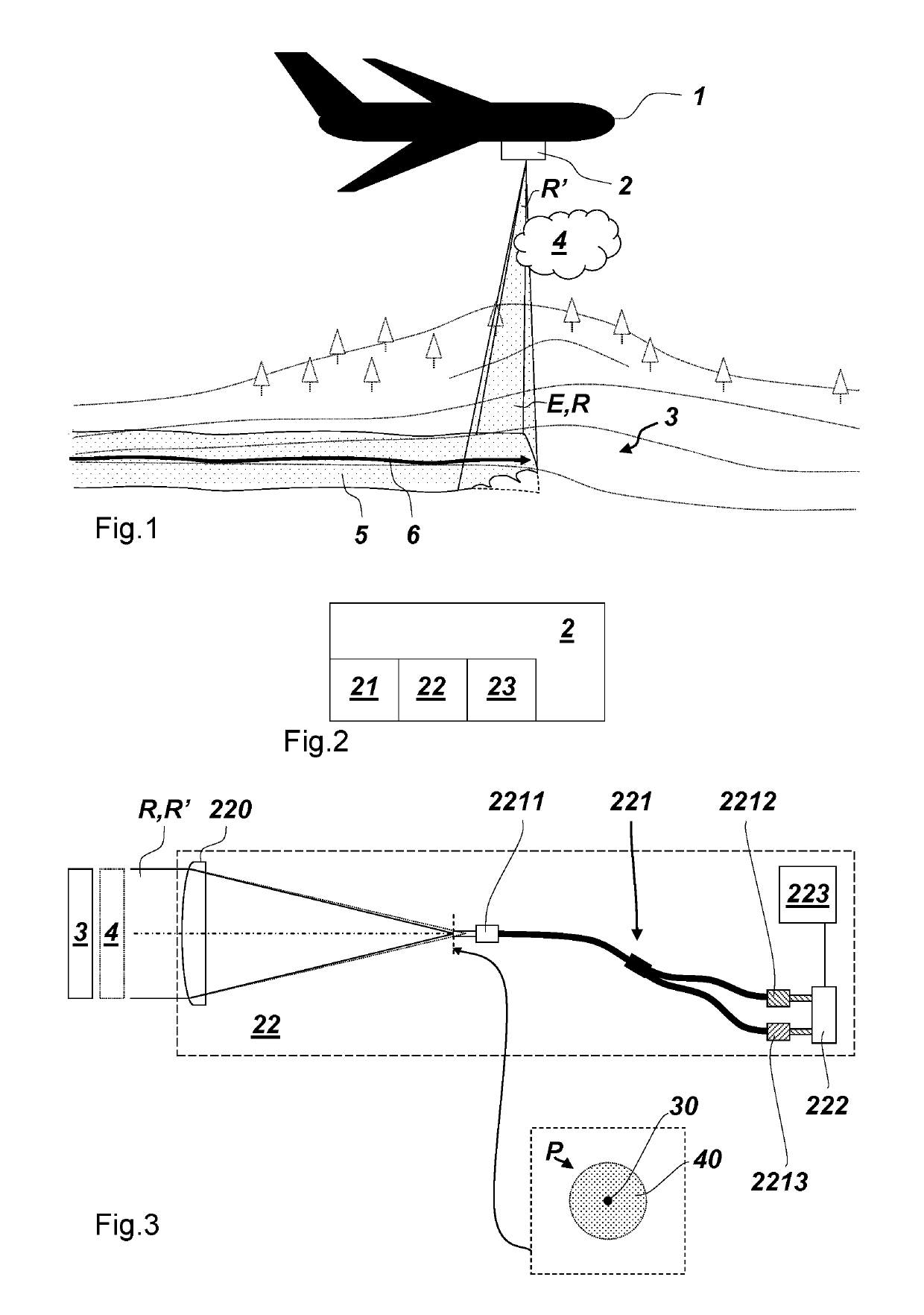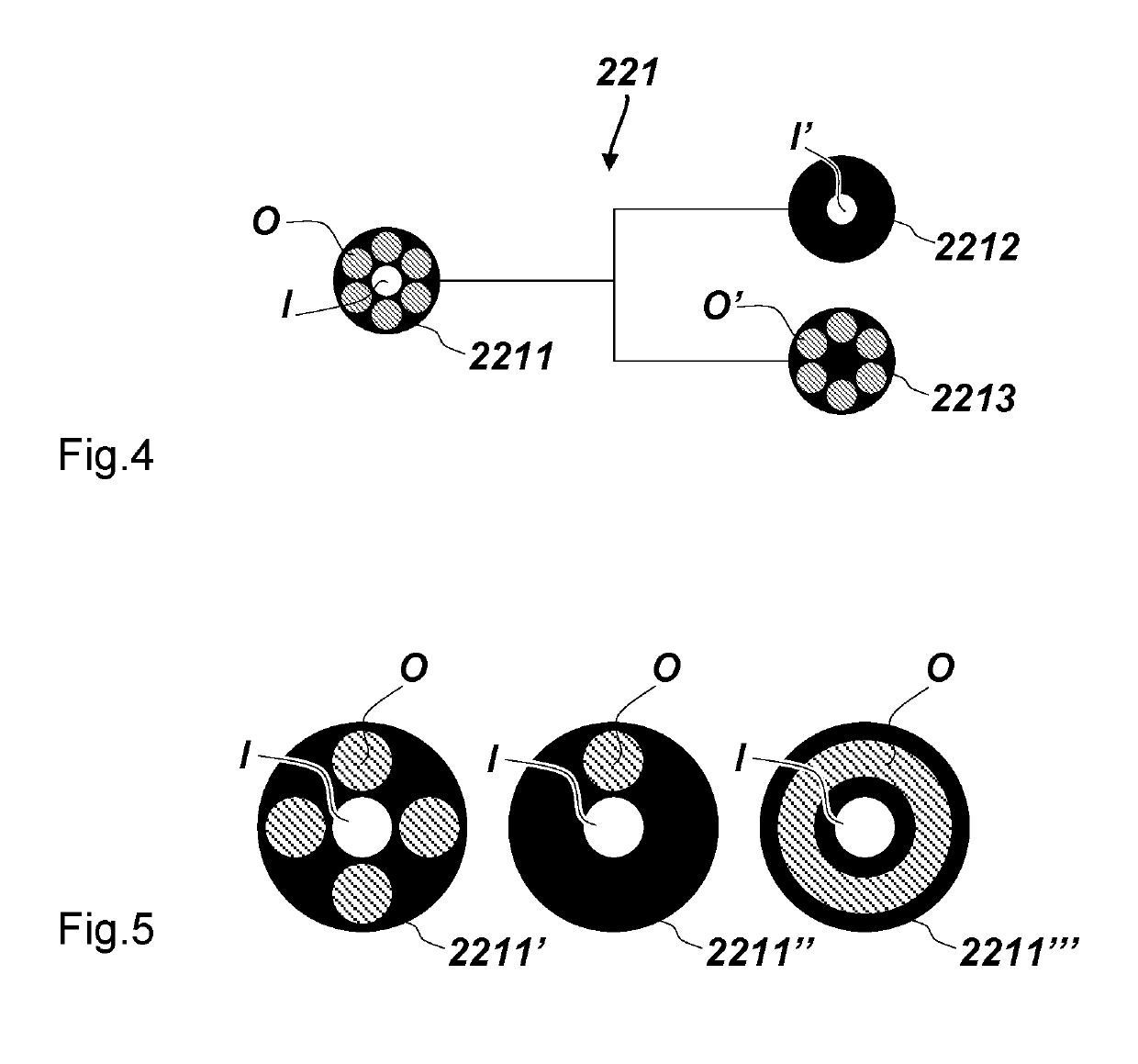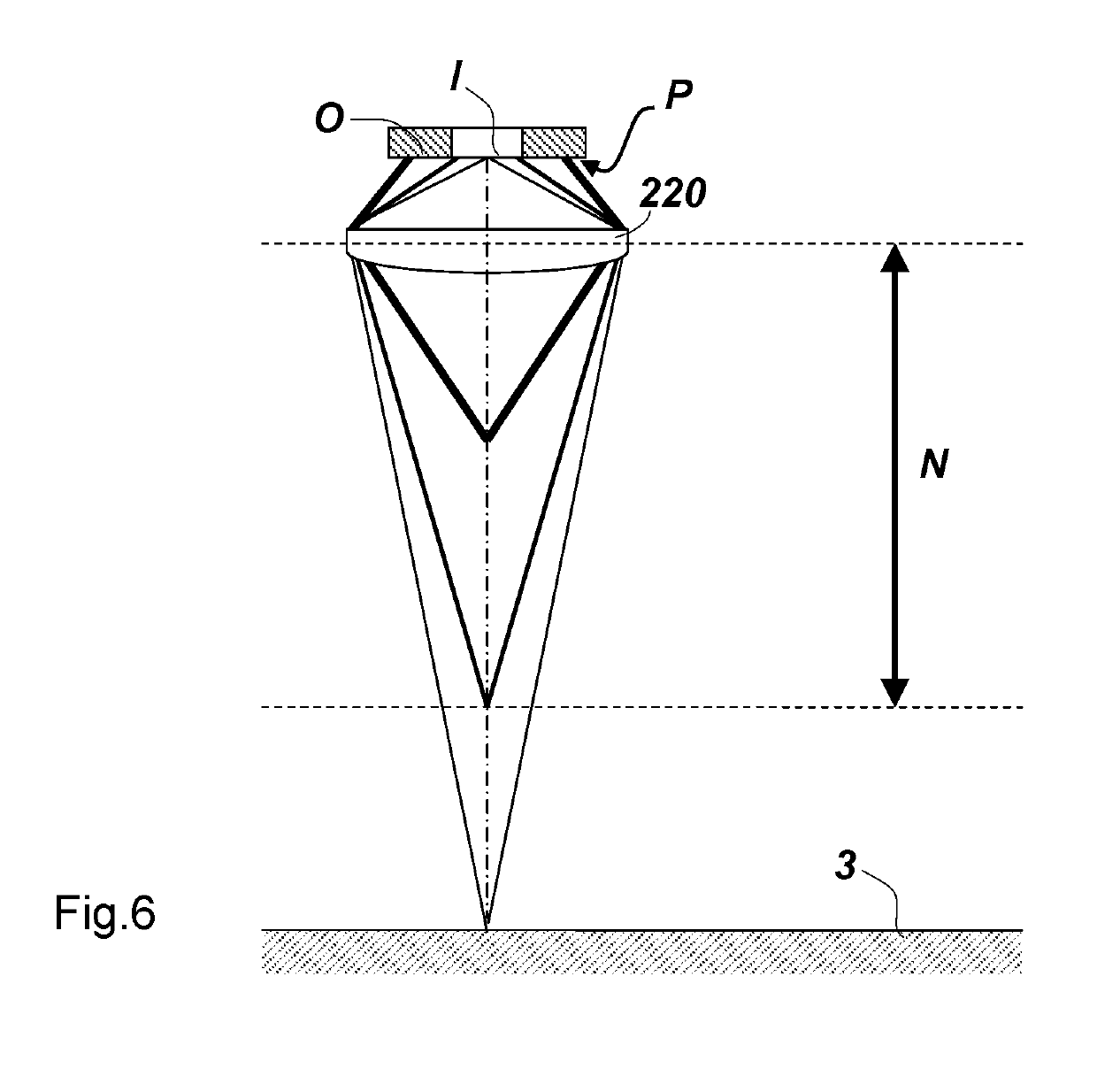Near-field pulse detection
- Summary
- Abstract
- Description
- Claims
- Application Information
AI Technical Summary
Benefits of technology
Problems solved by technology
Method used
Image
Examples
Embodiment Construction
[0032]FIG. 1 shows an aircraft 1 flying over a ground surface 3, which is the intended target, following a flight path 6 (trajectory). The aircraft carries an airborne range finder 2 according to an embodiment of the invention. By emitting multiple light pulses E and receiving them as backscattered pulses R, the range finder can at least continuously measure the flight altitude, but in particular record a two-dimensional (2D) profile of the flight path 6. In a further particular case, the range finder can rotate or oscillate the pulse path, and therewith sample a plurality of points 5 of the swath of the aircraft. In real-time or afterwards in a post processing, a point cloud can be generated based on the laser pulses E,R emitted and received by the range finder, which are registered with according time stamps of their emission / reception.
[0033]The cloud 4 represents an exemplary near-field obstacle potentially causing the range finder 2 to generate false measurement values which do ...
PUM
 Login to view more
Login to view more Abstract
Description
Claims
Application Information
 Login to view more
Login to view more - R&D Engineer
- R&D Manager
- IP Professional
- Industry Leading Data Capabilities
- Powerful AI technology
- Patent DNA Extraction
Browse by: Latest US Patents, China's latest patents, Technical Efficacy Thesaurus, Application Domain, Technology Topic.
© 2024 PatSnap. All rights reserved.Legal|Privacy policy|Modern Slavery Act Transparency Statement|Sitemap



